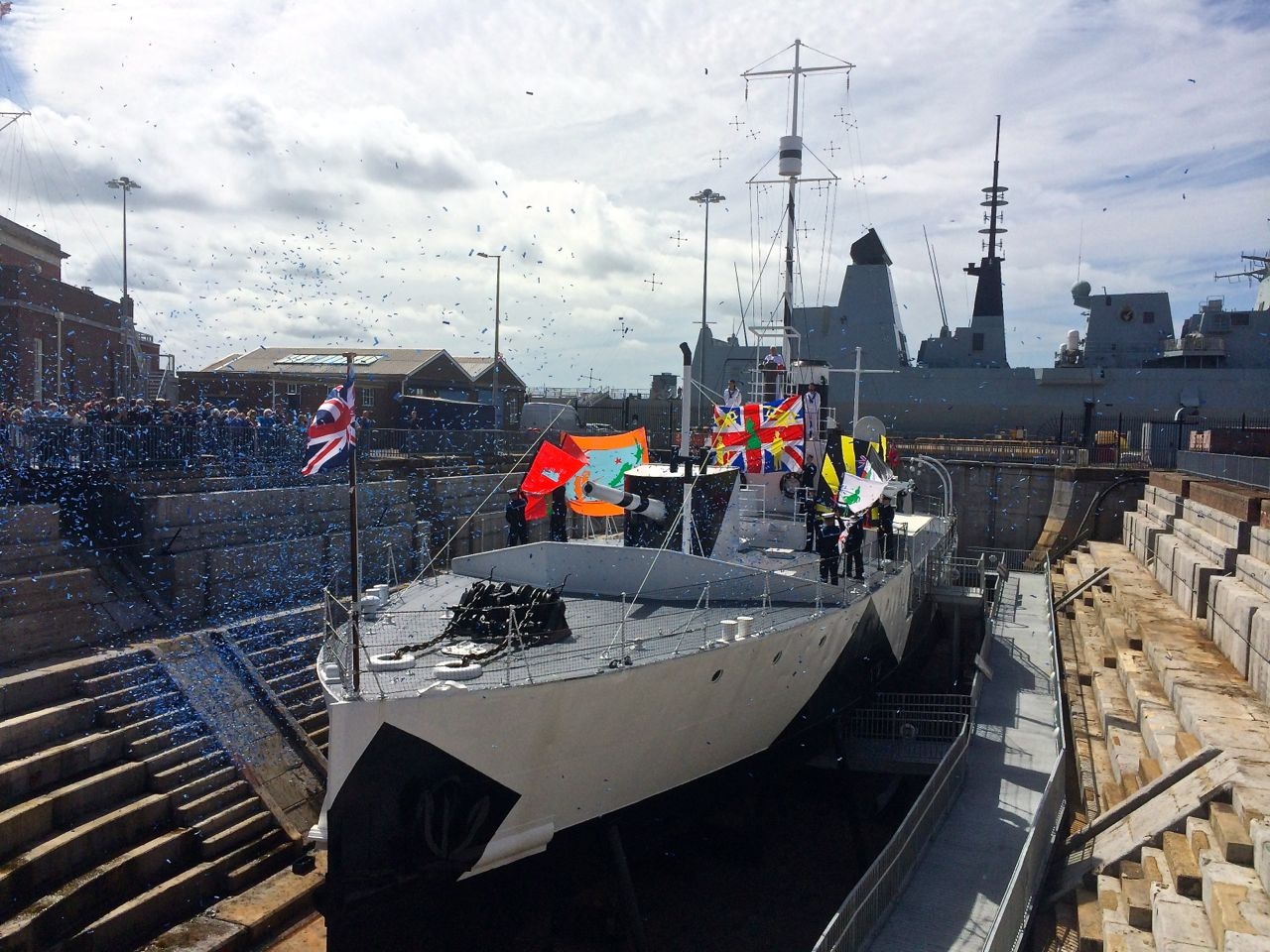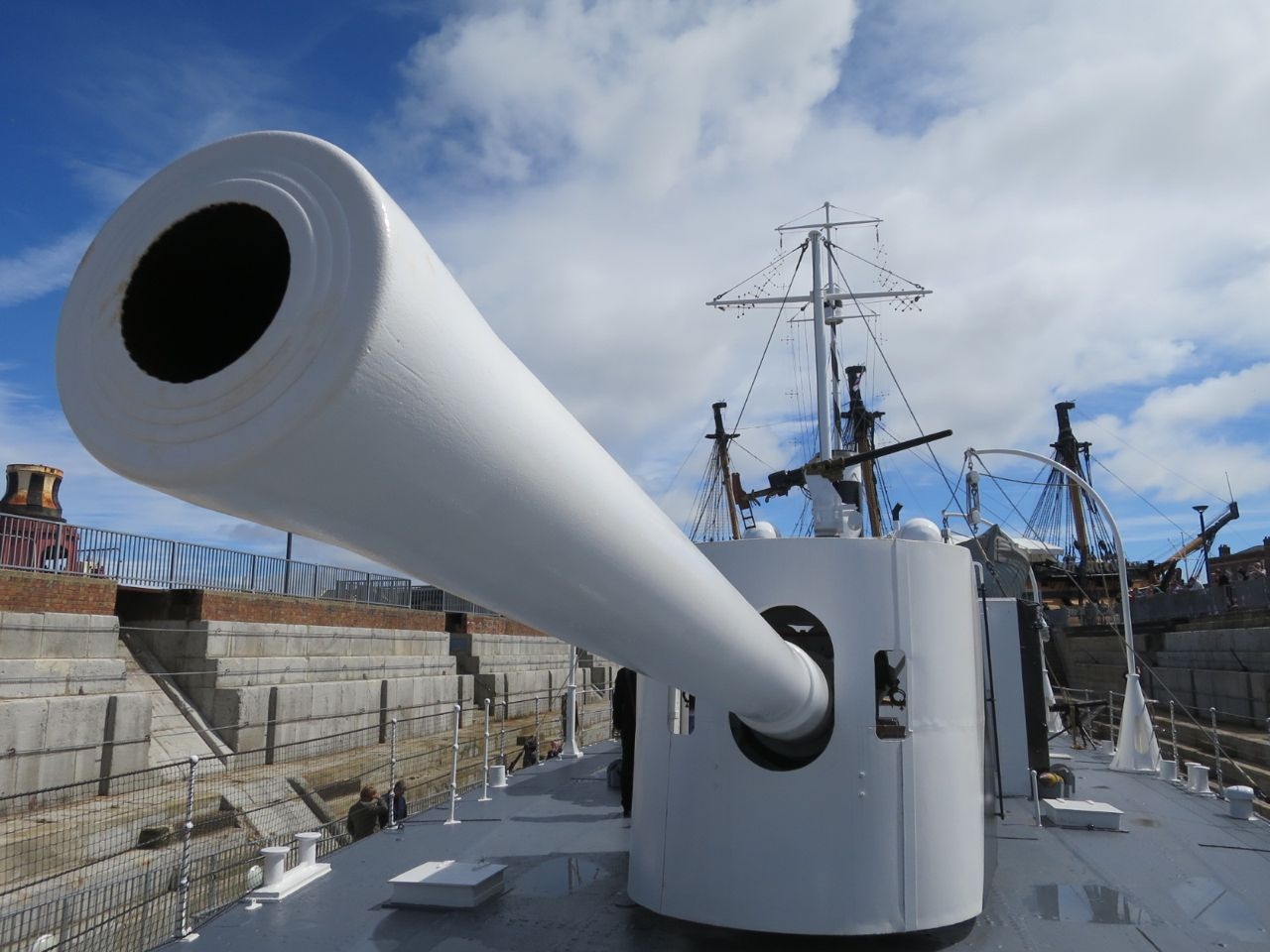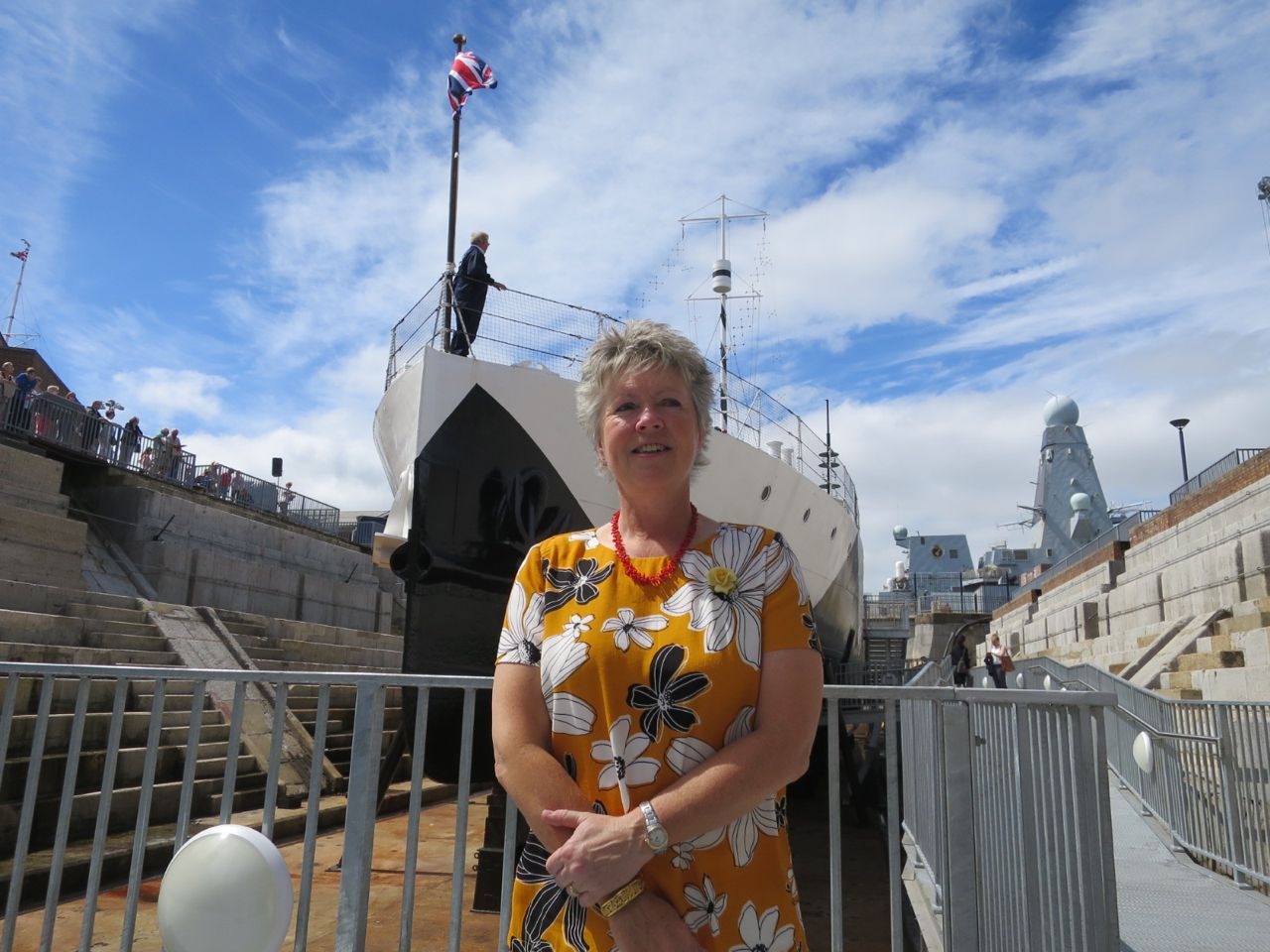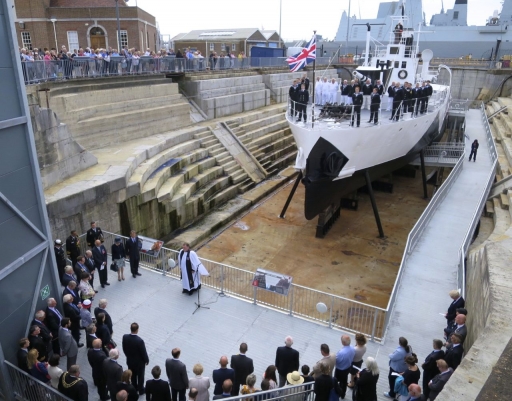Britain’s only surviving warship from the Gallipoli campaign has opened to the public after a £2.5 million restoration project at the National Museum of the Royal Navy.
HMS M.33, a large gunboat designed to carry out inshore attacks, is displayed in a dry dock close to Nelson’s flagship, HMS Victory, in the heart of Portsmouth’s historic dockyard.
Descendants of Gallipoli veterans joined British and Commonwealth representatives for the opening ceremony on August 6th 2015, the centenary of the last major Allied offensive on the Turkish peninsula.
The events were a blend of informal and formal, aimed at remembering all those who fought and died in nine months of fighting for control of the Dardanelles Straits. A programme of dance and drama led up to a formal service of commemoration beside M.33.

Confetti was fired over the decks of M.33 to mark her opening. The distinctive ‘dazzle’ camouflage was first used on the ship in 1918 (Photo: Centenary News)
HMS M.33 was among the ‘Monitor’ vessels deployed to provide supporting fire for the armies trying break out of the Suvla Bay and Anzac Cove beachheads in August 1915.
Professor Dominic Tweddle, Director General of the National Museum of the Royal Navy (NMRN), said “M.33 stubbornly and solidly stuck to her task” until the evacuation of Gallipoli in December 1915. She became known as a ‘lucky ship’ for not losing a single man.
Professor Tweddle said it was fitting that M.33 remained lucky, surviving as a focus for the remembrance of Gallipoli a century later.
“Beautifully restored by a dedicated team, she reminds us of the bravery and sacrifice on all sides, of all of those who gave their lives or service for their countries.
“She was there. No man living can say that, although many descendants of those who died or served keep the memories of their loved ones alive.
“The world we live in today is a world largely forged by the First World War. It is right that 100 years on we stop to reflect and remember. M.33 helps us to do that for this Centenary.”
“But she will be here long after all of us have gone, carrying the message on to future generation.”
Salonika
HMS M.33 stayed in the Aegean for the Salonika campaign, was sent to Northern Russia in 1919 to support anti-Bolshevik forces, and was later converted into a minelayer.
It was this ‘constant recycling’ that ensured her survival, points out NMRN. The ‘Monitor’ ended her service as a floating workshop in Portsmouth Harbour in the 1980s.
The 72 sailors who served on M.33 during the First World War endured a cramped and dangerous existence, as visitors immediately discover when they step inside the dark interior.
Loud bangs reverberate through the hull from an audio-visual presentation telling the story of Gallipoli, from the first attempts to force the Dardanelles to evacuation nine months later.

HMS M.33 was built with a flat bottom, and equipped with oversize 6 inch guns, making her ideal for coastal bombardment, but also difficult to sail, especially in heavy seas (Photo: Centenary News)
For almost 20 years, Lesley Wills has been researching the diaries of her grandfather, Richard Chapple of the Royal Marine Light Infantry, who served as officer steward on M.33 from 1915-18. Mrs Wills says he left a detailed record of his day-to-day experiences, much of it routine, but the dangers and the personal hardships are evident too.
“They were three and a half years off the coast of Turkey. They were fired on regularly, there were Zeppelins. They had aeroplane attacks. They were very, very lucky to get out of this.”
As steward, Private Chapple was responsible for food supplies. Lesley Wills says obtaining water was a particular problem: “It was dire. They had to have a chit to get fresh water. I can’t imagine how grim conditions would have been.”
Mrs Wills said the transformation of HMS M.33 since her first visit 16 years ago was remarkable: “We saw her as a rusting hulk and to see her today, it’s incredibly emotional.
“The first time we came down and saw the AV presentation, with my granddad’s name being used on the sound system, there were big tears.”
Members of Richard Chapple’s family were among those who laid wreaths at the opening ceremony.
 Lesley Wills alongside HMS M.33 (Photo: Centenary News)
Lesley Wills alongside HMS M.33 (Photo: Centenary News)
HMS M.33 has been restored as part of the NMRN’s Great War at Sea 1914-1918 centenary programme. The project, carried out in partnership with Hampshire County Council, was awarded a £1.8 million grant from the UK’s National Lottery.
Sir Peter Luff, Chairman of the Heritage Lottery Fund, is himself the son of a Gallipoli veteran who took part in the Suvla landings.
M.33 is one of more than 1,000 projects in Britain, both large and small, to have been funded so far to commemorate the events of the First World War, Sir Peter said.
More information about visiting HMS M.33 in Portsmouth can be found on the NMRN website. The National Museum of the Royal Navy is also exploring the Gallipoli campaign with a special exhibition – Gallipoli: Myth and Memory, runs until January 2016.
Posted by: Peter Alhadeff, reporting from Portsmouth for Centenary News
Images: Centenary News
